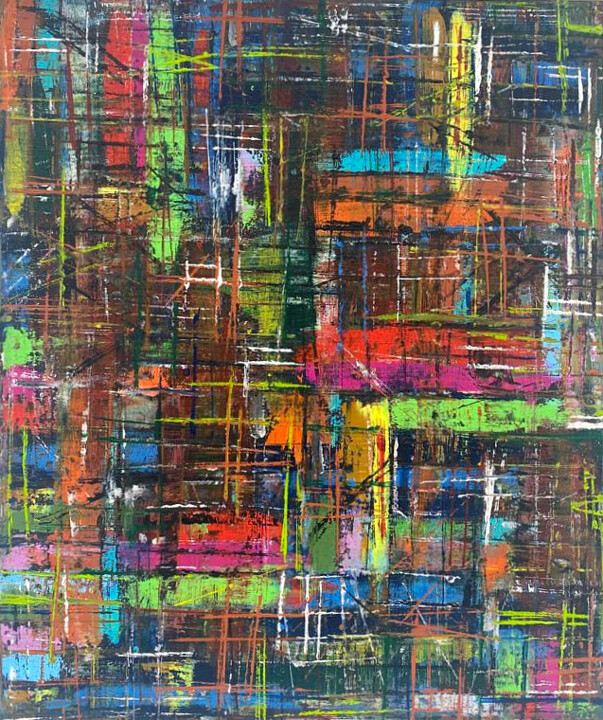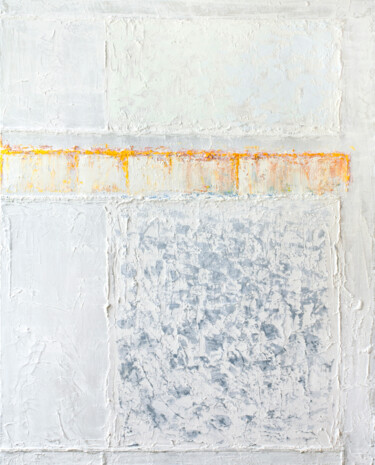A Brief History of Art
By Czech art history, we mean the entire complex of visual arts that were conceived and subsequently took shape and life in both the Czech Republic itself and in the various states that were part of it in previous centuries, serving as a home to memorable artists who, in the most famous examples, will be explored later. The story begins in long-forgotten times, as the Czech lands feature significant remains of prehistoric art, which could be summarized in the most famous Venus of Dolní Věstonice, a statuette depicting the homonymous naked deity, dating between 29,000 and 25,000 BC. If the latter gave voice to a distinct form of Czech Celtic art, it is important to highlight how in the following years, the art of the country in question often emulated the Austrian and German examples, reintroducing their currents, movements, and trends. Among these, it is worth noting how some of them took strong root in the territory, generating masterpieces by internationally renowned artists. I refer to the flourishing of Gothic, Art Nouveau, Cubism, and Surrealism in the Czech Republic, which have now been overshadowed by Czech nationalism, which, gradually starting from the 19th century, has had a strong influence on all the arts. Despite this latter point of view, I would like to continue the narrative by focusing on the above-mentioned key moments or highlights of Czech visual arts, starting, in chronological order, with the Gothic period and ending with Surrealism.
Highlights
 FOOL (2023)Painting by Pavel Filin
FOOL (2023)Painting by Pavel Filin
Gothic
Before delving into Czech Gothic art, it's good to briefly review what this period in art history entails, as it stemmed from architectural innovations inspired by the ideas of Abbot Suger, who believed that earthly light contained divine light and thus aimed to create religious buildings rich in stained glass. In technical terms, churches were equipped with flying buttresses and ribbed vaults, incorporating colorful stained glass into the architectural structure. As for sculpture, the humanistic tendencies of the era led to a more naturalistic and "everyday" approach to the human figure, primarily intended for decorating churches. This style appeared in the Czech Republic in the first half of the 13th century and persisted until the early 16th century, evolving in response to the demands of the reigning Bohemian dynasty of the time. One notable artwork from this period is the Pietà of Křivák, created by a Prague or Moravian artist, possibly for St. Wenceslas Cathedral or a nearby monastery.
 MORNING RAY. (2012)Painting by Igor Shulman
MORNING RAY. (2012)Painting by Igor Shulman
Art Nouveau
Let's return to definitions once more: the Art Nouveau style emerged to modernize design, drawing innovative inspiration from both organic and geometric forms, giving rise to fluid and natural figures that evoked the features of stems, flowers, and plants. Line and form took precedence over color, as vibrant lines were paired with subdued hues like pale green, brown, yellow, and blue. The style, which spread between 1890 and 1910, fell out of favor for the most part well before World War I, paving the way for the development of Art Deco in the 1920s. In the Czech Republic, Art Nouveau took root in the 1890s, with Alfons Mucha emerging as its major representative. Mucha's style was characterized by creating a pattern for object decoration that allowed for the repetition of the same stylistic pattern, with variations in the main theme. Essentially, the floral motifs he designed often remained unchanged, while the female subjects changed, portraying beautiful women capable of expressing an optimistic view of life.
 THE PORTRAIT WITH BIRD (2021)Painting by Muraz Martirosyan
THE PORTRAIT WITH BIRD (2021)Painting by Muraz Martirosyan
Cubism
Perhaps few are unaware that Cubism was born in 1907, the year Pablo Picasso created "Les Demoiselles d'Avignon," a masterpiece resulting from the experiments of the Spanish master who, along with Georges Braque, drew inspiration from Cézanne's work, using multiple perspectives to depict a single subject and fracturing images into geometric shapes. This movement, one of the most revolutionary of the 20th century, as it challenged traditional representations of space, also had a significant impact in the Czech context, reaching its peak from 1910 to 1919. However, rather than in painting, Czech Cubism manifested itself in architecture, despite the existence of famous and worthy painters of the movement, such as Bohumil Kubišta and František Kupka.
 MADONNE / MADONA (2022)Painting by Vincent Chignier
MADONNE / MADONA (2022)Painting by Vincent Chignier
Surrealism
Surrealist images are born from the artist's unconscious, which disdains the rational mind capable of repressing the power of imagination with its numerous taboos. These beliefs were deeply influenced by the thinking of Sigmund Freud, who revealed how the dimension of dreams could indeed bring the unconscious to light, rich with precious and authentic revelations of human emotions and desires. Consequently, surrealists put on canvas the motifs that emerged from their dreams and unconscious minds, often creating extravagant and sometimes unsettling images, intended to awaken the viewer's consciousness. One of the prime examples of Czech Surrealism is "From my diary" (1933) by Jindřich Štyrský, an essential masterpiece of the artist, who, during his career, experimented with various styles, but was particularly impressed by the surreal tendency of placing objects in strange contexts, which he brilliantly reproduced in the aforementioned work. As for dreams, the artist, as the title suggests, actually kept a diary to collect them, for later use when searching for subjects to immortalize. At this point, the history of Czech art continues into contemporary times, thanks to the work of artists on Artmajeur like Radek Skopec, Adam Votocek Art, and Petr Johan Marek.
 BORN FROM THE ASHES (2018)Painting by Radek Skopec
BORN FROM THE ASHES (2018)Painting by Radek Skopec
BORN FROM THE ASHES by Radek Skopec
Radek Skopec, an artist from the Czech Republic born in 1967, personally defines his style as self-taught and solitary, centered on the study of a deeper understanding of form and line, which has evolved into a unique vision, often characterized by shades of orange, black, and brown. This vision is enriched with a fascination for damaged or broken surfaces, capable of creating a discontinuous and interrupted nature of form. Skopec's artistic process is based on a particular figurative study in three phases: that of the Subconscious Mind, the Sensual Birth, and finally, Destruction. In the first phase, the artist conceives the work, following instinct, emotions, and imagination, leading to a confrontation with the painting support. In the Sensual Birth phase, the painter gives life to individual layers and multiple forms, which finally find their place on the canvas. Lastly, Destruction comes when he deliberately alters the surface through tearing, scratching, and sanding until achieving the desired result. All of this is the foundation for the creation of "Born from the ashes," where these elements come together to create an intense and "worn" close-up portrait, with the eyes, directed to the right, certainly representing the focal point.
 "SINGULARITY" (2022)Painting by Adam Votocek Art
"SINGULARITY" (2022)Painting by Adam Votocek Art
SINGULARITY by Adam Votocek Art
Adam, an artist from the Czech Republic, aims to give form to his emotions, stemming from a life filled with travels where he has always sought to collect material and incorporate it, along with the more everyday, into his abstract exploration. In this context, colors play a fundamental role as the ultimate conveyors of feelings, carefully chosen by the artist to give life to authentic sensations, ready to awaken and keep himself alive, as well as anyone else who contemplates his work. His typical abstractions of lines and "tangles" of color are indeed a tool to reveal his inner state, exposing it for sharing and thus displaying an ever-exciting narrative intent. In the case of "Singularity," for example, he simply states, "Let's develop our uniqueness. Each of us is unique." Similarly, it appears that every line animating the composition appears unique and distinct, having its own raison d'être, yet at the same time capable of creating a harmonious whole with the other forms on the canvas, interpretable as different and diverse personalities, which, in unison, have always had the courage to reveal themselves.
 PINK & VIOLET (2021)Painting by Petr Johan Marek
PINK & VIOLET (2021)Painting by Petr Johan Marek
PINK & VIOLET by Petr Johan Marek
Petr Johan Marek, born in the Czech Republic in 1978, primarily expresses himself through abstract language, often generating compulsive repetition of brushstrokes that form horizontal lines, finding space in a multitude of similar parallels. This way of working, as admitted by the artist himself, represents a new interpretation drawn from the study of the vibrant colors of Pop art, the fragmentation of Pointillism, and the all-encompassing approach of Abstract Expressionism. The reference to Pop art is realized by the proposal of certain bright colors, which are also the artist's own favorites, inspired by the changes in life and nature. The goal, however, remains the same: to convey a sense of tranquility and peace to be shared with the viewer, who often gets lost contemplating each individual form present in his rich abstract compositions. As mentioned earlier, in the case of Pink & Violet, the artist has likely created a canvas painted in violet, on which he has patiently and with approximate precision constructed a succession of pink lines arranged on multiple horizontal planes. The result is that in the small spaces where the lighter color doesn't appear, the darker one is seen, ready to create a harmonious contrast of colors that, pleasantly alternating, give a sense of calm to those who, in their busyness, find the time to stop in front of it, perhaps even trying to count each individual element they see.


 Olimpia Gaia Martinelli
Olimpia Gaia Martinelli























